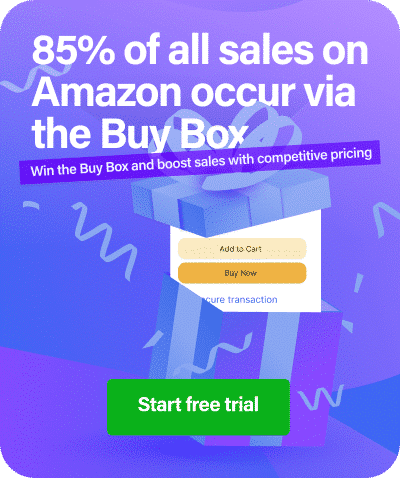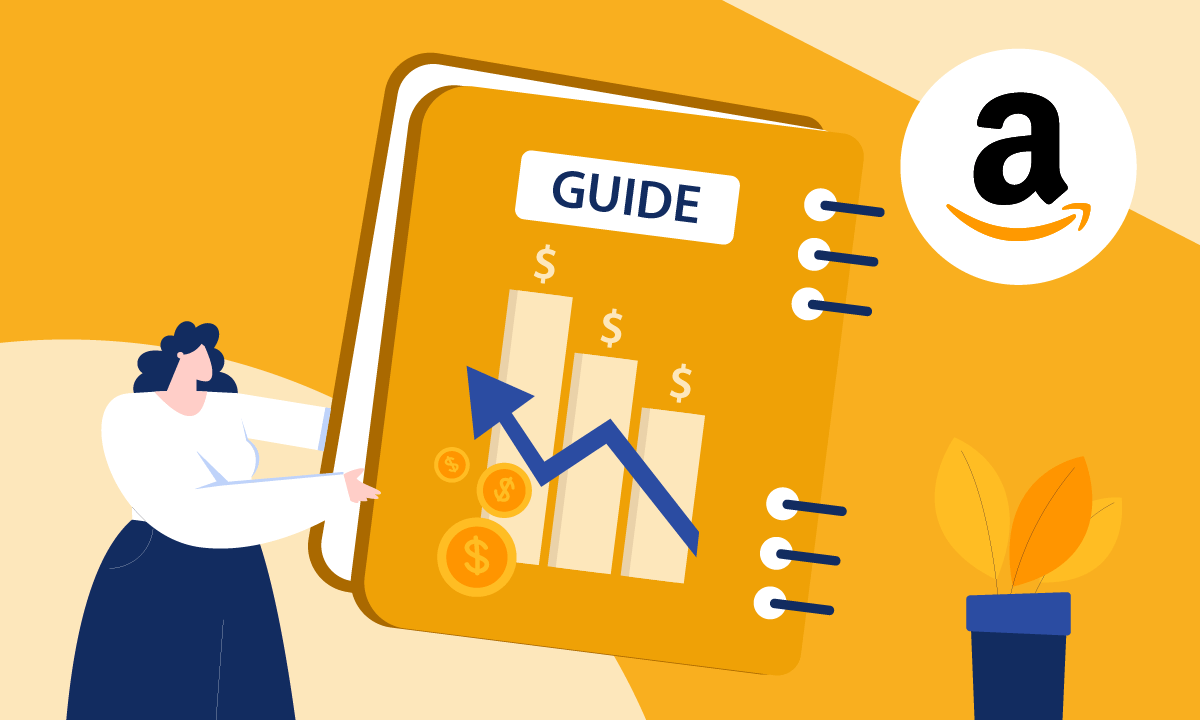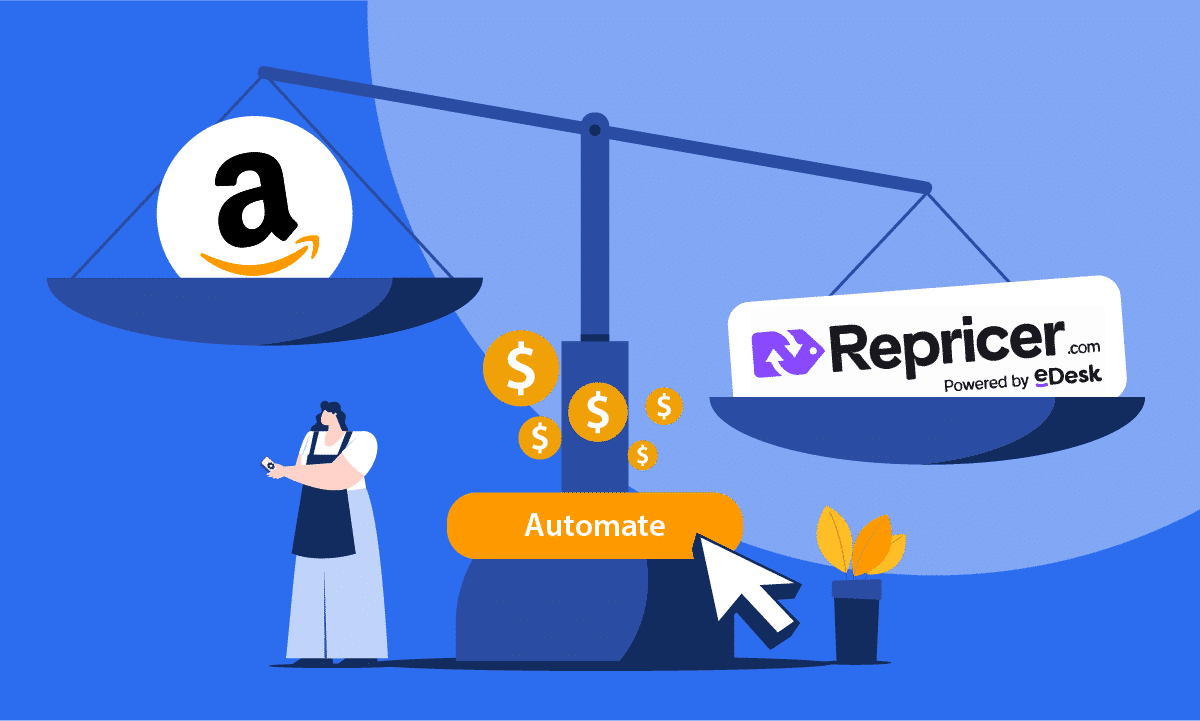More than half of US consumers (54%) start their product search on Amazon, according to a Retail Dive. That means keywords should play a crucial role in your marketing strategy to ensure as many customers as possible find you.
Here’s how to drive traffic to your Amazon listings and increase conversions.
1. Select the best keywords
Bidding on the right keywords to include in your product pages and hidden search-term fields can improve your ranking and ultimately influence your sales.
Harness Amazon data
Amazon’s data is actual customer data. It’s not theoretical search-term data sourced from other search engines—it’s what your customers have been searching to find your products.
While Amazon doesn’t publish this information, there are ways to access it:
Utilize the search-term report for sponsored products
Located in Seller Central, a search-term report can be downloaded for any of your automatic campaigns and should be your main source of keyword harvesting.
Don’t have any automatic campaigns in place? Set up some for your bestsellers and capture your keyword data to optimize your ads and listings.
Use the Amazon search bar
When you type a word in the search bar, Amazon provides you with suggestions based on previous customer searches. This is a great way to get an idea of what shoppers are searching for so you don’t miss any valuable keywords.

Harvest keywords using third-party tools
Third-party tools such as Google’s free Keyword Planner are a great way to find lucrative keywords that can help you understand what is being searched for so you can focus on driving targeted traffic to your Amazon listings.
Enter different search terms related to your product, go through the list of suggested keywords and put any that may be relevant in your hidden search-terms field.
You can also save keyword lists related to your products by downloading the data that Google gives you into spreadsheets and sorting by search volume for future reference.

If you find it too inconvenient to collect the keywords yourself, Grepsr.com, a data extraction service can help you scrape keywords at scale to help you narrow down your preferences. They are adept at extracting even search-suppressed data.
Maximize your hidden-search terms
In the keywords field in your Amazon flat file, you have a 1,000 character limit—use it.
The best way for people to find your products on Amazon is through search, so it’s vital that you use this space to include as many possible customer searches as you can.
Once you harvest a nice chunky list of keywords, narrow down your list to around 10 that you’d like to rank for in Amazon’s Search Engine Results Pages (SERPs).
Include your most important keywords in your product title and pepper them around your product page listing (e.g. in bullet points and the description) so that Amazon knows your product is relevant for someone searching with that keyword.
Tips for success
- Include several color shades that may apply e.g. lime green, teal blue, fuchsia pink.
- Include sizes in centimeters, meters, inches and feet.
- Don’t include commas—this wastes space and doesn’t count.
- Avoid repeating words—if you have a keyword in your title or product listings already you don’t need to include it here.
- Brainstorm alternative uses for your product that customers may search for.
- Customers use adjectives—be sure to include as many descriptive words as possible.
- Don’t forget synonyms—what you call a rug, some people might call a carpet or a mat. Be sure to include as many synonyms for your product as possible.
2. Improve product discoverability
Ensuring your product shows up in your target customer’s search is the first essential component of selling success.
While keywords are a crucial part of getting your products discovered, there are more ways that Amazon decides where your products will rank in the SERPs.
Here’s an official statement from Amazon about how their algorithm works:
Our work starts long before a customer types a query. We’ve been analyzing data, observing past traffic patterns and indexing the text describing every product in our catalog before the customer has even decided to search.
Amazon is seller agnostic, focusing SERPs on products rather than the sellers of those products.
The difference between Google and Amazon is that the former ranks pages based on which ones are most likely to answer the searcher’s query. By comparison, Amazon displays results based on which products the searcher is most likely to buy.
If you remember one thing about how the online giant ranks products, remember this:

In short, if Amazon doesn’t think your product will result in maximum sales, it won’t rank well.
So, we’ve compiled the main changes you can make to your listings today to make sure your products have a greater chance of discovery by Amazon’s spend-happy shoppers.
Make sure Amazon knows your product is relevant
When a customer searches for your product, Amazon decides if your product page is relevant to that search. There are a couple of ways they determine this: using your page content such as titles, bullet points and descriptions, or by using the aforementioned hidden-search terms that you entered in your product flat file.
Show Amazon your product will convert
Tracking the sales velocity and history of a product is one of the main ways that Amazon decides where your product will rank. Why? Because this data tells Amazon whether or not your product is resulting in sales and, thus, revenue for them.
While you can’t change the sales history of your products in a short space of time, you can change the velocity, which is the number of sales your product gets within a certain period.
Surges in sales velocity will signal to Amazon that your product is becoming more popular and they will start moving your listing up the ranks which will ultimately drive greater traffic to them.
Three great ways to spike your sales velocity
- Increase your budget on Sponsored Ads bids, especially for your most lucrative keywords.
- Lower your prices for a quick boost in sales, then increase them to your normal prices.
- Use repricing software to maximize Buy Box ownership.
Prove to Amazon your item can be shipped on time
Amazon puts an enormous emphasis on fast, hassle-free shipping.
Why?
Because Amazon knows that’s what customers want. This is why they encourage so many sellers to ship products through the Fulfilled by Amazon (FBA) program and why FBA shipped products will instantly rank higher in SERPs.
Not an FBA seller? Don’t worry: there are still ways you can show Amazon that your fulfillment process is in top shape.
- Gear up your logistics to handle a faster order processing speed and make sure to avoid order delays.
- Offer free shipping on your best sellers (you could increase the price slightly to make room for this).
- If you do use FBA, offer Frustration-Free packaging. You can learn more about Amazon Certified Frustration-Free Packaging Programs here.
Let Amazon know you care about customer satisfaction
Customer satisfaction is one of the reasons Amazon has achieved such success—so much so that it’s woven into the very fabric of their culture, right down to the ranking algorithm.
Indeed, those beloved seller metrics don’t just prevent you from getting suspended, they also play a huge part in your SERP rankings.
Achieving perfect customer satisfaction ratings is something that most sellers will have to work on and monitor continuously, but luckily there are a couple of things you can do to help push your product pages up the ranks which will inevitably drive more traffic to your listings.
- Get as many negative seller reviews removed as possible.
- Prepare your ecommerce customer service team for higher query volumes.
- Keep your inventory well-stocked. Amazon keeps close track of how often you run out of stock. When an item goes out of stock, rankings can take a tumble, which can be difficult to recover from once the item is back in stock.
- Answer any unanswered customer Q&As (Amazon doesn’t state answering customer questions as a ranking factor, but it is part of customer satisfaction so it’s better to be safe than sorry).
Learn more about Amazon SEO.
3. Optimize your product pages
Once customers have found and clicked on your product, you have one chance to ensure they choose you over a competitor.
Optimizing your product information also ties back to better rankings as Amazon will have more relevant keywords to choose from (not to mention, more conversions means more revenue).
Perfect your titles
Titles have the most weight in terms of search relevancy. There is little point including top keywords in your product page if they are missing from the title.
- List the top keywords that you want to rank for and include these in your title, making sure to include the most important ones at the start.
- Keyword-stuffed titles don’t engage the customer, so try to avoid long-winded ones that don’t make any sense.
- If you sell branded products, always include the brand name and manufacturer number first.
- Include at least one unique selling point that differentiates you from competitors.
- Spell out measure words such as ounce, inch and pound
- All numbers should be numerals, not spelled out.
Embellish your bullet points
Give customers everything they need to know at first glance by highlighting every unique selling point in a concise way.
- Make your bullets long enough to engage the reader, but short enough to keep it to the point.
- Has your product got great features? Be sure not to leave any out!
- Make your bullet points as keyword-rich as possible, while still using persuasive language.
- Don’t leave any bullet points out—even if you can’t think of anything to write, any information about your product brings you one step closer to a sale.
- Use complete sentences that spark interest. One- or two-word lines highlighting features won’t show your reader how your product is different to a cheaper alternative from a competitor.
Build on your product description
Engaging descriptions play a huge part in Amazon SEO. If a shopper has scrolled this far, it means they’re interested in your product.
This is where you tell a story, ignite your reader’s imagination and make your product seem irresistible.
- How will your product benefit your customer’s life? As a product marketer, you don’t sell products—you sell solutions. Make sure your description tells them exactly what your product will do for them.
- Highlight key selling points and additional features using short bullets at the end. This gives customers a digestible summary of why they need your product.
- Use as many images as possible. If you’re not yet using Enhanced Brand Content (EBC), pick some of your best sellers and start getting creative. We’ve created a whole guide to help you create the perfect EBC description here.
Categorise products correctly
Make sure your product is in the most relevant, narrow category possible by using the correct code in the item_type (US) or Browse Node ID (EU) field in your flat file.
As you can see in the image below, mirrors on Amazon are categorized by Home & Kitchen > Home Decor > Mirrors. Then they are split into different mirror types. If your mirror was listed under Mirrors only, then people searching in other categories wouldn’t find it.
4. Obtain More Customer Reviews
Customer reviews are a powerful tool for social proof, as they provide potential buyers with insights into the quality and satisfaction of your products. They act as endorsements, assuring potential buyers that the product lives up to its claims and meets their expectations.
Having a high volume of positive reviews can contribute to higher search rankings within Amazon’s algorithm, increasing the visibility of your listings and attracting more organic traffic.
Acquiring customer reviews manually can be a time-consuming process and introduces uncertainty since it’s challenging to identify which customers have had a positive experience with your product and service. However, by leveraging a third-party platform like FeedbackExpress, you can automate the review generation process and specifically target positive feedback. This approach saves you time and effort by streamlining the collection of reviews.
Lastly, promptly addressing any negative reviews or customer concerns demonstrates your commitment to customer satisfaction and can potentially turn a dissatisfied customer into a happy one.
Final thoughts
These fixes are your starting point for driving traffic to your Amazon listings. We recommend taking your bestsellers and going through the checklist above to see what improvements you can make to get your products noticed. See what works for you, then roll it out to the rest of your offering.
After all, even on Amazon’s colossal marketplace, the smallest of changes can make a significant impact.
Repricer.com is the ultimate Amazon repricing software available, enabling you to react instantly to changes in the marketplace and stay ahead of your competitors. Start a free trial today and win the Buy Box.







